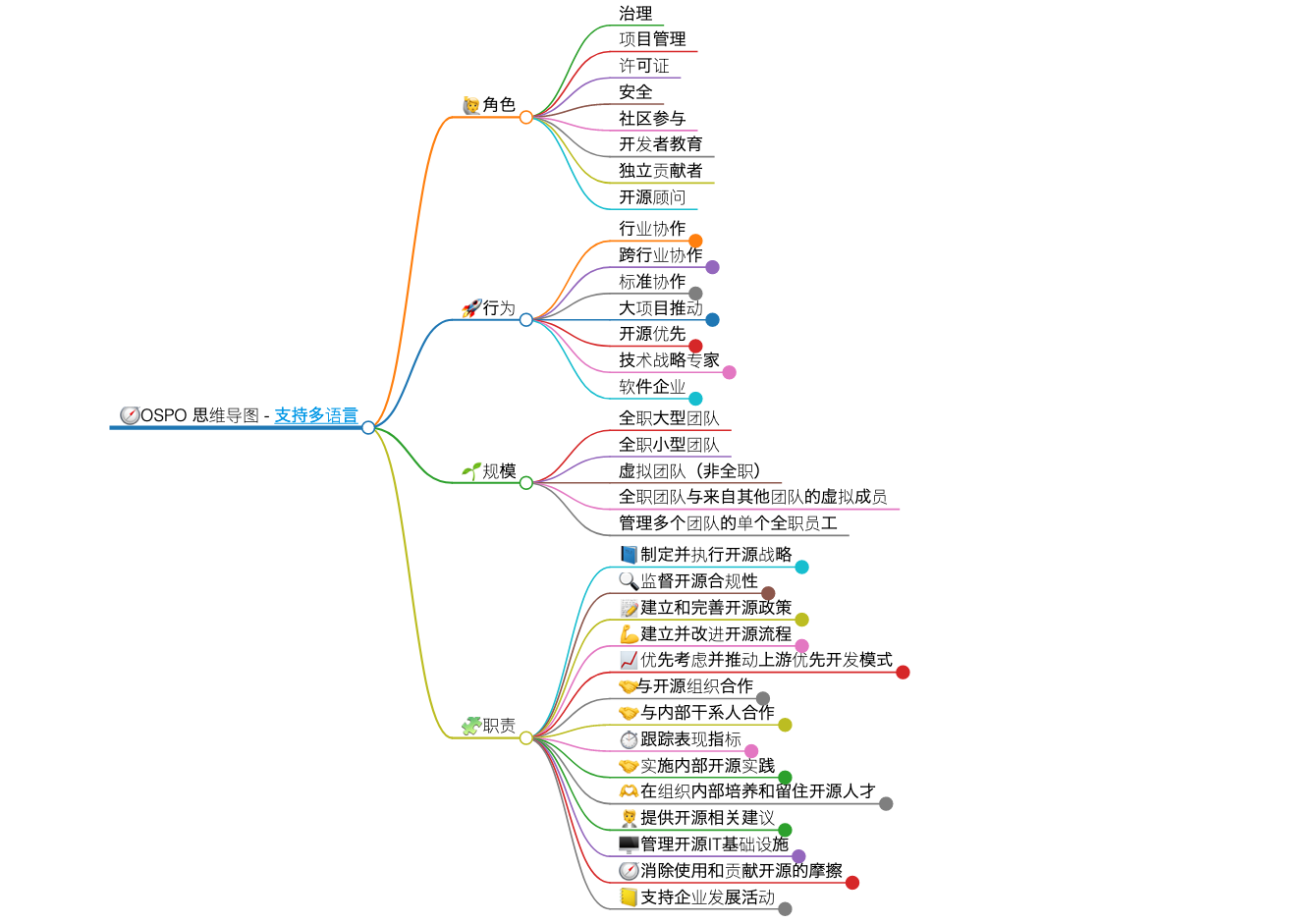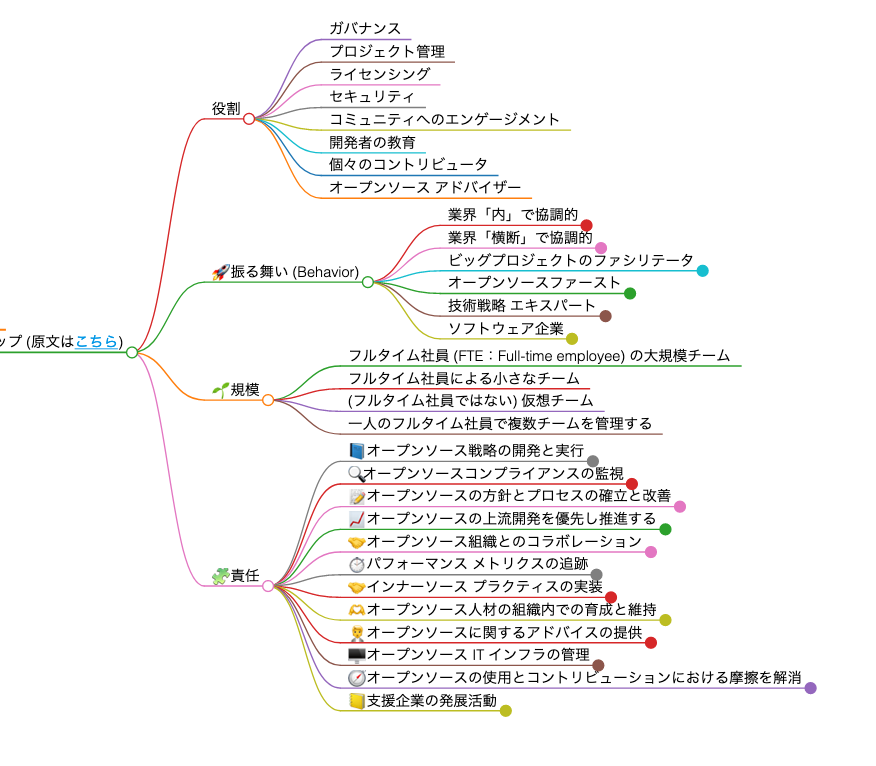We are thrilled to announce the latest updates to the OSPO Mind Map project. Thanks to our community, OSPOlogy contributors have created Chinese and Japanese versions of the OSPO Mind Map. This interactive visual representation of an Open Source Program Office’s (OSPO) responsibilities, roles, behavior, and team size within an organization helps OSPO practitioners and others engaging with OSPO roles understand the different elements of an OSPO and how it can be structured.
We would like to express our sincere gratitude to the contributors from OSPO APAC SIG China and TODO & OpenChain OSPO SIG Japan Community who made this possible, especially to Chris Yang (Chinese translation) and Naomichi Shima (Japanese translation). Their contributions have expanded the accessibility of the OSPO Mind Map, and we are thrilled to share these new versions with the open-source community.
Whether you are a seasoned practitioner or just getting started with OSPOs, we believe that the OSPO Mind Map can be a valuable resource for your organization. By using this interactive map, you can navigate through the different OSPO responsibilities and better understand its role within an organization.
We invite you to explore the new Chinese and Japanese interactive versions of the OSPO Mind Map:


People can check out the merged PRs for these translations on the GitHub repository, which can be found at: https://github.com/todogroup/ospology/pull/150 and https://github.com/todogroup/ospology/pull/283.
🙋♀️ Contribute to OSPOlogy and the OSPO Mind Map Project
Would you like to become a OSPO Mind Map contirbutor? Check the OSPOlogy GitHub repo to learn how to become a one!
🤗 Acknowledgments
Last but not least, big thanks to all the OSPO Mind Map’s contributors and reviewers!
- Ana Jiménez Santamaría
- Annania Melaku
- Charles Eckel
- Chris Yang
- Gergely Csatari
- Jari Koivisto
- Josep Prat
- Naomichi Shima
- Mike Fix
- Steven Dake
- Thomas Steenbergen